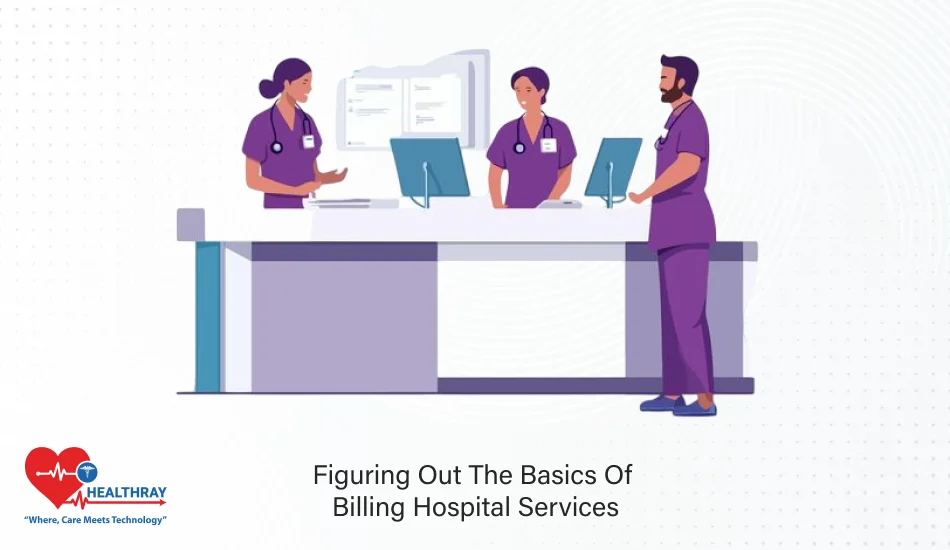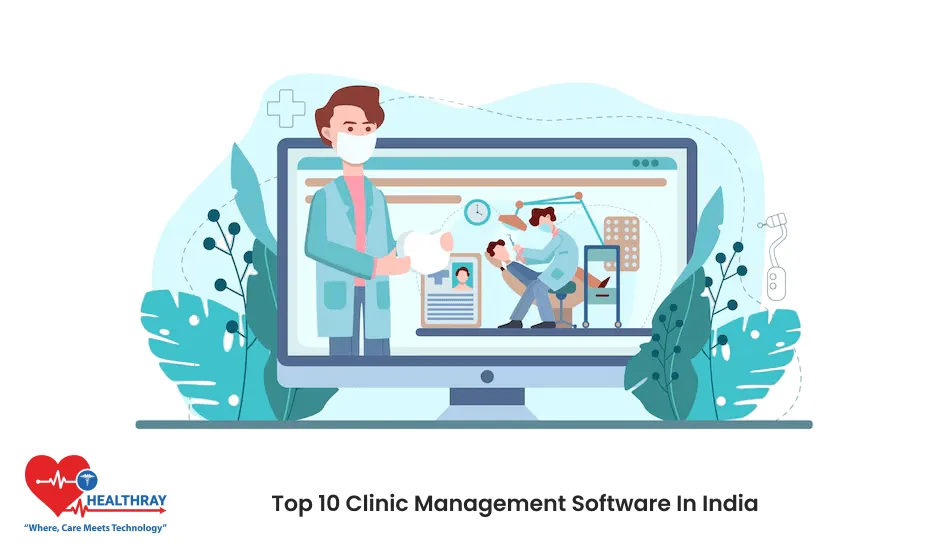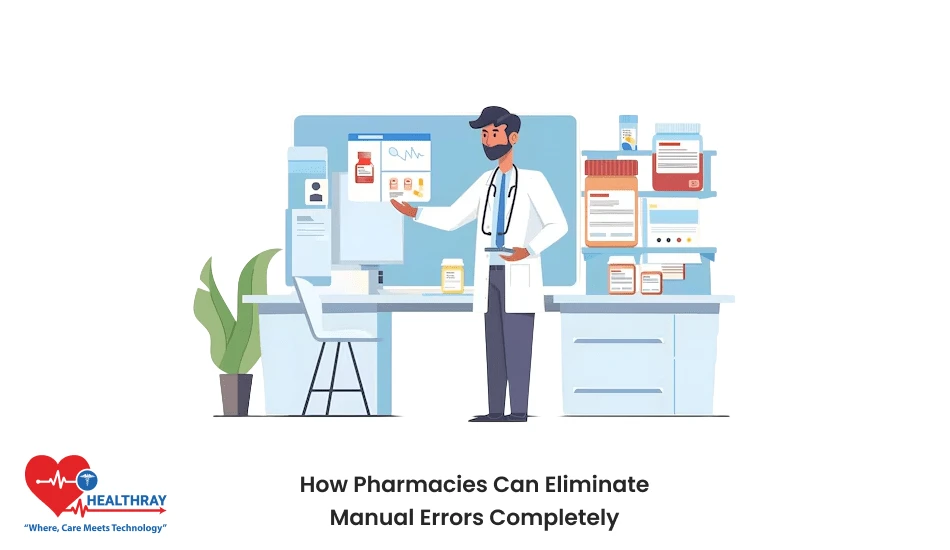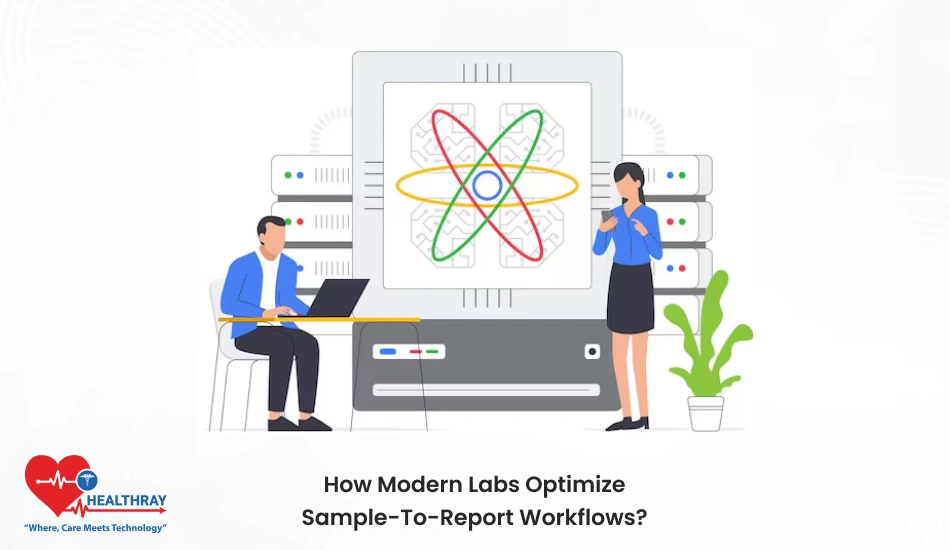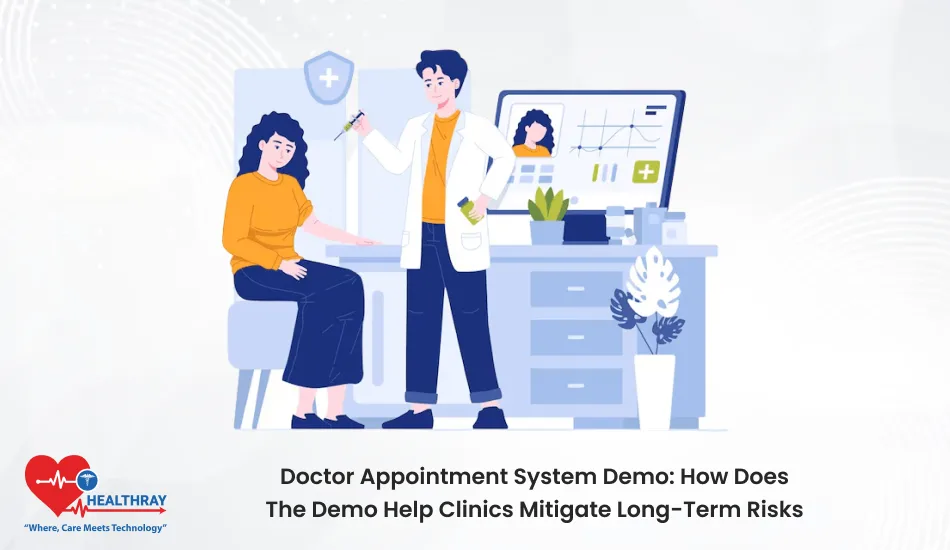It’s a maze to get through for everyone involved. Patients try to make sense of exactly what it is they’re paying for, and for the administration of the hospital, it requires making one’s way through a very complex system with precision. To the medical billing professional, it is about details lining up with regulations and insurance policies.
It details everything in this system, starting from the very registration of a patient to the final payments. Whether one is new to the field, working in managing a hospital’s financial operations, or simply seeking to make sense of his or her hospital bill, this article will walk you through what you need to know. In no time, you should have a good idea about how the mechanisms of billing work in hospital management systems.
Patient Registration
The most important initial steps in the process of hospital billing are the registration of patients. These generally include the collation of vital information about the patients, including their personal data, case history, and insurance status. Proper registration ensures a smooth process of billing and steers clear of unnecessary delays later.
Key Information Collected during Registration:
- Patient’s full name, date of birth, and contact information.
- Insurance provider information to include policy number and coverage details.
- Emergency contact information.
- Relevant medical history or current treatments.
Even minor mistakes during this step, such as a misspelled name or an incorrect insurance number, can lead to rejections or delays of claims. That is why many hospitals confirm these details before proceeding.
For any medical billing professional, the registration data needs to be accurate; otherwise, in general, time and inaccuracies will be wasted in the billing cycle. It is about time that hospital administrators start focusing on training people for carefully vetting this information, using automated systems wherever possible.
Medical Coding

In simple words, medical coding acts as the backbone for the whole billing process in a hospital by converting the diagnosis and procedures of a patient into some standardized codes. The codes are important because they ensure uniformity in streamline insurance claims and help attain accuracy. The feature of billing in the hospital management system simplifies the process of applying medical codes consistently.
What happens in medical coding?
Medical coders review patient records and documentation provided by the health care provider.
They assign standardized codes based on the diagnosis, procedures, and equipment used during treatment.
These codes follow established systems, including:
International Classification of Diseases for diagnoses
CPT stands for Current Procedural Terminology for medical procedures.
Healthcare Common Procedure Coding System for services and supplies.
Why is coding important? Coding is very crucial since through accurate coding, the actual amounts that a hospital gets as reimbursements are determined. A claim can easily be denied or delayed, causing unnecessary anxiety for both the patient and hospital staff, due to a mismatch in the codes used or lack of detail.
Best Practices for Medical Coders:
Stay current with the latest changes in code development, standards, and regulations.
Compare codes regularly against patients’ records.
Minimize errors and save time with the use of advanced software.
Therefore, for any hospital administration, this will mean investment in skilled coders and effective tools. Medical billers depend upon the efficiency of coders as their work ensures that claims are moving without glitches. Together, this teamwork will make sure that there is a smooth flow of billing without any errors.
Insurance Claims Process
The insurance claim process is the most critical step in the process of billing within a hospital, as it directly influences how and when the hospital gets paid. It involves making a claim to the patient’s insurance provider by detailing out the services rendered along with their costs.
Steps in the Insurance Claims Process:
Claim Preparation:
Collect all relevant documentation: patient information, details of treatment, and the medical codes assigned to the patient during the coding process.
Ensure that the claim form is filled out as required to avoid rejections.
Claim Submission:
Send the claim form to the insurance company, either electronically or manually.
Most providers use clearinghouses in order to ensure the claims meet specific requirements of the payer.
Claim processing by the insurer:
The insurance company reviews the claim for verification of services, eligibility, and coverage.
They assess whether the claim is in line with policy provisions.
Approval or Denial:
If approved, the insurer will reimburse for the covered services to the hospital, while the patient will be responsible for the remaining balance.
If denied, the insurer will state a reason for such denial, which might include coding errors, missing documentation, or coverage exclusions.
Challenges in the Claim Process:
Simple errors like incorrect patient information and codes that do not match will either delay a claim or lead to denial.
In addition, exclusions or ambiguous wording of insurance policies often create problems for reimbursement.
Tips to Simplify Claims:
- Track submissions and statuses with claim management software.
- Routinely audit claims for mistakes before filing.
- Communicate effectively with the billing staff and insurance providers for quicker problem resolution.
A strong claims management system ensures cash flow for hospital administrators. The ability to minimize delay must be one of the capabilities of an accurate and thorough billing professional. It creates transparency for patients since they will understand what they owe when claims are processed efficiently.
Common Challenges That Occur In Billing Department In Hospital
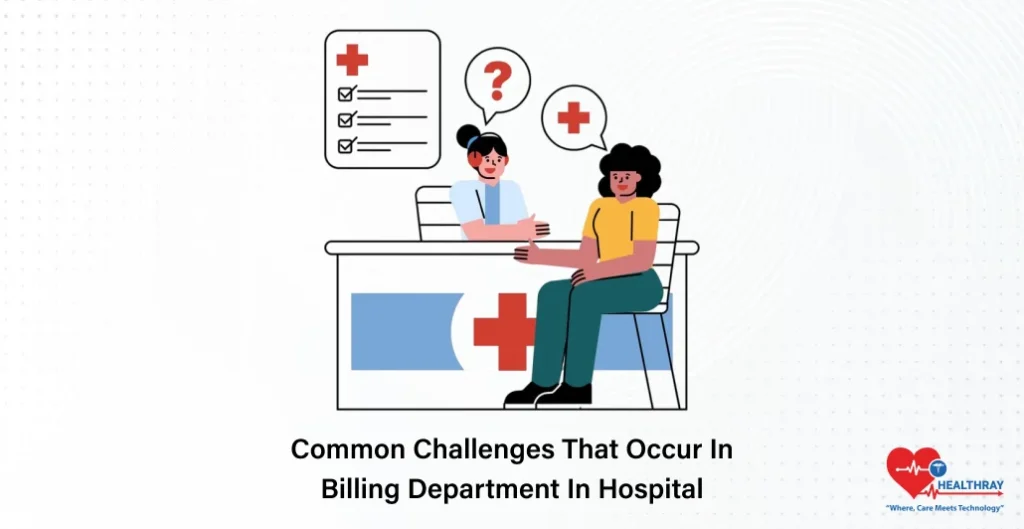
Hospital billing is quite a complex process. Mistakes and other problems might be imminent, which can affect efficiency and patient satisfaction. Identification and addressing these issues in advance will ensure everything goes well.
Billing Errors The most common billing-related mistakes are recording a patient’s details wrong, choosing the wrong codes, or charging twice for the same service. These usually cause claim rejections and delays, frustrating the patients and increasing administrative workload.
Solution:
Perform strict checks before sending claims.
Educate staff on common pitfalls in billing; update regularly regarding changes in coding standards.
Denied Claims Insurance companies may also reject claims for incomplete documentation, non-covered services, or mismatched coding. Denials postpone reimbursements and stress resources at the hospital.
Solution:
Perform pre-submission audits to identify potential issues.
Establish a denial management team to resolve issues as quickly as possible.
Gaps in Communications Bills are not clearly understood by the patients, thereby creating disputes. The coordination between the billing staff and the clinical staff is lacking, at times resulting in incomplete records.
Solution:
Use clear, patient-friendly language on bills.
Improve communication amongst teams by holding regular meetings and using shared systems.
Evolving regulations in healthcare billing are among the many moving targets with which the staff and administration of any hospital must comply on an almost day-to-day basis.
Solution:
Attend training and workshops in order to stay updated regarding policy changes.
Leverage software systems that incorporate real-time regulatory updates.
Delayed Payments Patients with high out-of-pocket costs or responsibilities for unclear insurance may delay payments, creating cash flow challenges.
Solution:
Offer flexible payment plans that include installment plans.
Explain patient responsibilities clearly at the time of registration.
Technology Underutilization: Those hospitals that are still stuck to manual processes of billing experience inefficiencies and higher error rates compared to those using automated systems.
Solution:
Invest in billing software integrated with other hospital information systems, like patient records and insurance portals.
Addressing these challenges improves not only the bottom line for hospitals but also the experience for the patient. Being proactive and adapting continues to remain the key to administrators and billing professionals in conquering these common challenges.
Patient Rights and Responsibilities
Knowledge about their rights and responsibilities toward the hospital billing systems will help to explain the situation and increase the trust of patients in hospitals. The protection and responsibilities regarding patients are not usually understood by them.
Patient Rights in the Billing Process:
Clear and transparent billing:
Patients have the right to receive itemized bills detailing all the charges.
The hospitals should explain the bill and answer all questions.
Protection against Errors:
Patients are allowed to dispute the charges that they feel are incorrect.
The hospitals are bound to investigate and take immediate action on these errors.
Access to Financial Assistance
All patients have the right to ask about and apply for financial assistance or charity care if they are having trouble paying their bills.
Privacy of Financial Information:
For example, hospitals are required by law, under regulations such as HIPAA, to maintain patients’ financial information confidentially.
Patient Responsibilities in the Billing Process:
- Providing Accurate Information:
Patients can self-register if their personal and insurance information is up to date and correct.
- Understanding Insurance Coverage:
Patients should check their insurance to understand what is covered and what could be their expenses.
- Paying Bills on Time:
All patients are required to pay their portion of the bill by the due date. Alternatively, they should make arrangements to discuss alternative payment plans with the hospital.
- Communicating Concerns:
Those patients who have disputes, errors, or inability to pay bills on time should immediately inform the billing department.
How Hospitals Can Help:
The hospitals can help the patients by providing financial counseling, making sure the bills are comprehensible, and facilitating flexibility with the payments. Clear communication of practices and rights regarding billing averts misunderstandings and builds trust in the hospital-patient relationship.
For the billing professional or administrator, patient education about their rights and responsibilities represents good ethics in the care of the patient, assures compliance, and engenders goodwill and satisfaction.
Best Practices for Professionals Point
For efficient hospital billing, medical billing professionals and administrators should implement best practices that reduce errors, increase accuracy, and enhance patient satisfaction. Such practices will help optimize operations and ensure compliance with constantly changing regulations.
Every Step Counts – Towards Accuracy
Accurate patient registration, coding, and documentation are fundamental to avoiding billing errors. One error at the start could snowball into claim denials and fiscal losses.
Tips:
Verify patient and insurance information at registration.
Use audit tools to review claims before submission.
Stay Current with Regulations
Health care billing regulations change quite frequently and understanding these changes helps in avoiding compliance problems.
Tips:
Attend regular training sessions concerning updates on billing and coding.
Utilize billing software with real-time regulatory change integrations.
Leverage Technology
Automation minimizes the chance of manual errors and speeds up the billing process. Along with that, a billing professional should use modern tools to increase efficiency.
Tips
Invest in integrated billing systems that connect with patient records and insurance databases.
Utilize claims issue tracking software for faster denial management.
Communication is the focus.
Clear communication between the billing teams, clinical staff, and patients is important in ensuring the smooth flow of billing.
Tips:
- Meet regularly with the clinical teams to ensure that the documentation is accurate.
- Train staff to listen to patients’ queries and disputes with empathy.
Implement Robust Denial Management
Denied claims can take a major toll on the revenues of a hospital. It is significantly important that there is a system in place to track and resolve denials.
Tips:
- Monitor commonly denied reasons, and use those findings to work on recurring problems.
- Follow up on denied claims with the insurance providers in a timely manner.
Educate Patients
Patients are often overwhelmed by medical bills. Clear and concise information helps to reduce disputes and increase trust.
Hints:
- Provide financial counseling to patients and explain bills and payment options.
- Bill statements should use simple language to avoid confusion.
- Regular Auditing and Process Optimization
- Regular audits expose inefficiencies in the billing process and thus bring forth areas for improvement.
Perform audits monthly that address compliance and accuracy.
Improve billing workflows through feedback from patients and staff.
Identifying and implementing these best practices from hospital administrators and billing professionals will further operational efficiencies, assure regulatory compliance, and enhance the patient experience. This will indeed help in smoothening the processes, ensuring financial stability in healthcare facilities on a proactive basis.
Conclusion
Understanding the basic principles of hospital billing is important for professionals working in medical billing, hospital administrations, and the patients too. Each step involved in this process, starting from registration to the final payment, has a critical value for smooth functioning, correct charge accruals, and timely reimbursements.
Accuracy and current awareness among the billing professionals is not an option. To the hospital management system, efficient systems and open communication systems to instill confidence and avoid potential disputes. As for the patients, they are encouraged to understand their rights as well as their responsibilities in minimizing the stress associated with their billing.
By paying attention to common issues and best practices, this industry could craft a process from the beginning that is fair, efficient, and easy to navigate. Whether trying to work out the finances of an entire hospital or attempting to make sense of your individual medical bills, knowledge coupled with collaboration is the bottom line.
